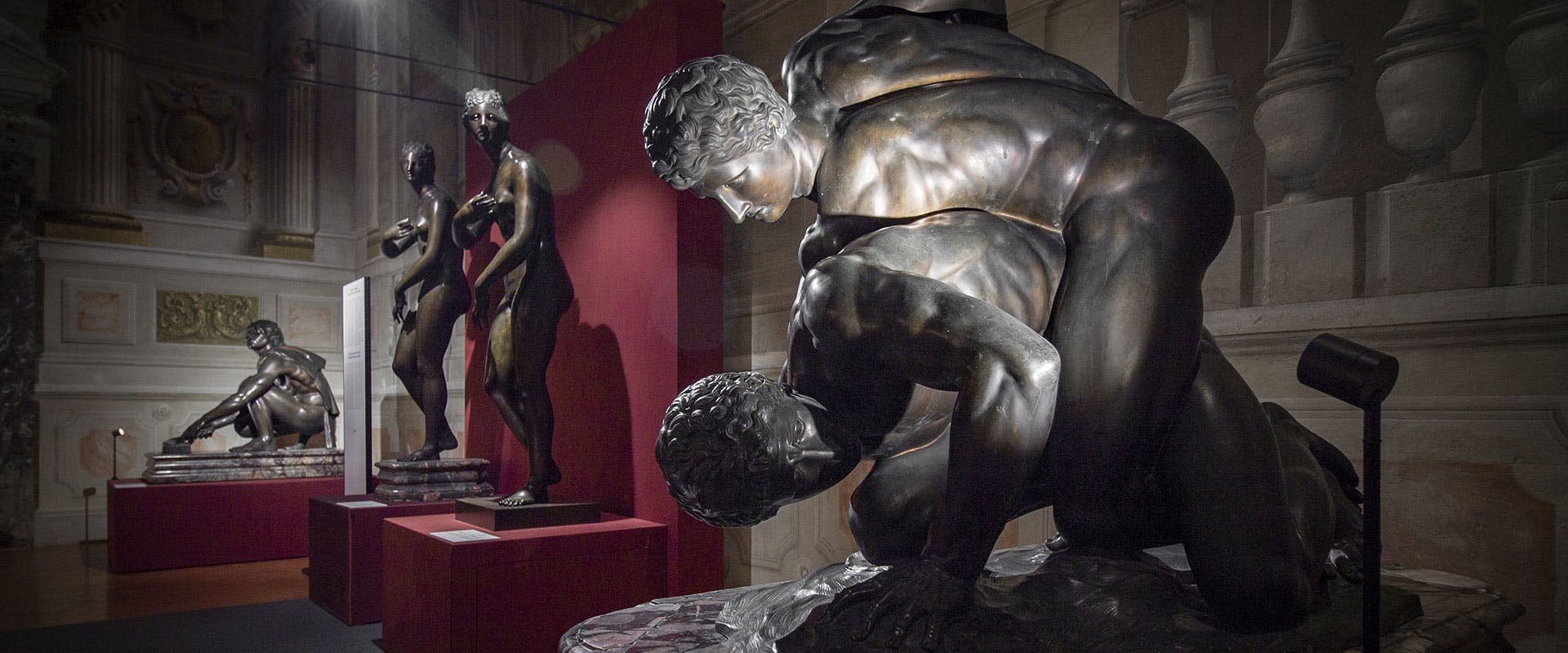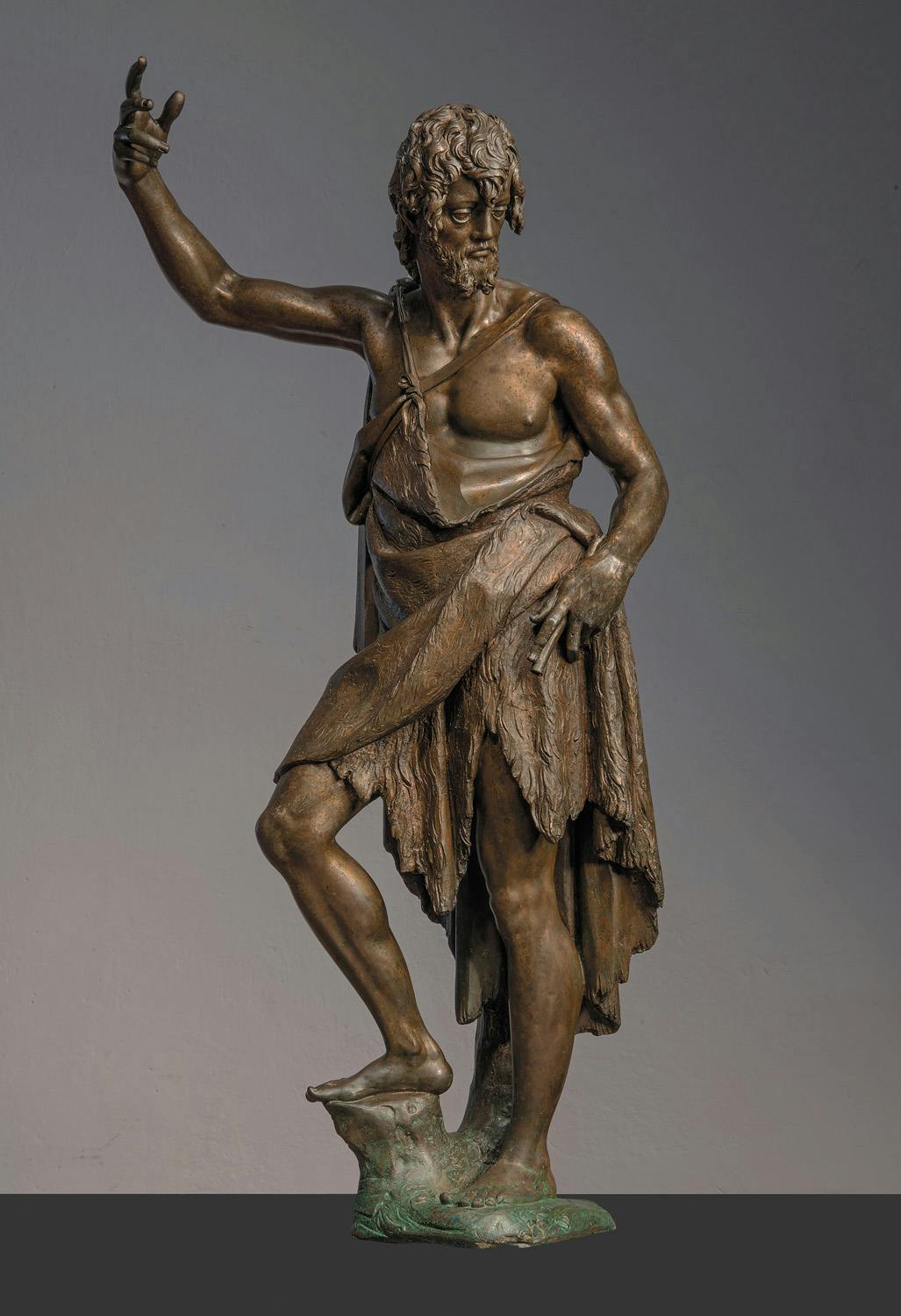Forged in Fire. Bronze sculpture in Florence under the last Medici
Thanks to a targeted selection of works, the exhibition sets out to offer a complete overview of the art of bronze sculpture in the Tuscan capital particularly in the age of the last Medici Grand Dukes.
The full power and energy of Baroque art is captured in metal thanks to the living power of fire: that is the basic concept behind 'Forged in Fire. Bronze sculpture in Florence under the last Medici', the exhibition hosted in the Treasury of the Grand Dukes on the ground floor of the Pitti Palace from 18 September to 12 January 2020, showcasing over 170 works of art, with numerous prestigious loans from such leading international museums as the Vatican Museum in Rome, the Louvre in Paris, the Victoria & Albert in London, The Hermitage in St. Petersburg, the J. Paul Getty in Los Angeles, the National Gallery of Art in Washington, the Frick Collection in New York and many more. The narrative, which unfolds in six rooms on the ground floor of the palazzo, begins with a small selection of masterpieces by Giambologna. It was the work of this sculptor from Flanders, whom Francesco I de' Medici chose as his court artist, that kicked off the great season of Florentine bronze sculpture – a season that was to reach a peak in the mid-17th century in the work of such artists as Giovan Battista Foggini and Massimiliano Soldani Benzi whose fame stretched well beyond the borders of Tuscany, and indeed of Italy.
The exhibition, curated by Uffizi Director Eike Schmidt together with Sandro Bellesi and Riccardo Gennaioli, offers visitors the first full and exhaustive overview of bronze sculpture in the Tuscan capital, an art form that achieved its loftiest expression under the last of the Medici grand dukes in the late 17th and early 18th centuries. Bronze sculptures and semi-precious stone inlay works were commonly traded with Europe's other courts as diplomatic gifts – in effect, bargaining chips that were technical and material in nature – and were the object of major commissions from the continent's crowned heads and aristocracy.
The exhibition hosts a dazzling array of 'firsts', starting with Giambologna's exquisite Bathing Venus (from a private collection), modelled for King Henri IV of France and never yet shown in a public exhibition, which will be on dislay for first time, as will his St. John which has been specially restored for the occasion. Equally important is the homecoming, from Rome, of a group of copies of Classical statues in Buontalenti's Tribune in the Uffizi, fashioned in bronze by Foggini with the likely assistance of Pietro Cipriani. The copies were unearthed in the Finance Ministry in the course of research ahead of the exhibition, almost 150 years after 19th century Finance Minister Quintino Sella carried them off to Rome. Another major homecoming is that of the sculpture groups once housed in the Electress Palatine's apartments in the Pitti Palace: originally numbering 12, Electress Palatine Anna Maria Luisa de' Medici bequeathed them to relatives, friends and institutions, but they have found their way into various different collections and museums over the centuries. The curators have managed to bring 11 of them together again for the exhibition, including one identified in the royal collections in Madrid only in 2006.
The exhibition also hosts an astonishingly tender bronze depicting the meeting between the Child Jesus and the Young St. John the Baptist, by that superbly versatile master Soldani Benzi; and visitors will be able to compare Soldani's version of the Dancing Faun both with a version by Foggini and with a version in Doccia porcelain version: indeed one of the exhibition's aims is to highlight the important role played by the local porcelain manufactory in preserving and handing down the forms and models of this great season of Florentine sculpture in a output which, while admittedly serial, was still invariably of the highest quality. The oustanding technical achievement of Florence's master bronze sculptors can also be readily appreciated in a selection of monstrances and other spectacularly rich religious items, and in two Crucifixes, one by Giambologna and the other by Pietro Tacca, Giambologna's favourite pupil renowned for giving us the Porcellino, or bronze boar, in Florence's Mercato Nuovo. Visitors will also be able to familiarise with the names of Giuseppe Piamontini, Giovacchino Fortini, Antonio Montauti, Agostino Cornacchini, Lorenzo Merlini, Girolamo Tacciati, Giovan Camillo Cateni, Pietro Cipriani and others who have surfaced from the archives in the course of preparatory research for the exhibition – for example Francesco Formigli, a hitherto little-known artist to whom it has been possible to attribute fully three works on the basis of documentary evidence. The exhibition winds up with a collection of 42 drawings by Soldani Benzi, a mesmerising assortment of sheets acquired by the Uffizi only a year and a half ago, and with a number of paintings, including work by Dandini and Bimbi that interact with the sculptures' vibrant plasticity.
"It is a unique pleasure to be able, for the very first time, to explore this chapter in the history of art in Florence and Europe the way it deserves to be explored in view of the crucial role that it played in the Medici court's magnificence from the late 16th century on", explained Uffizi Director Eike Schmidt, adding: "Through their use as diplomatic gifts, bronze sculptures promoted Florentine taste with an international audience while at the same time, within a broader social and economic network, providing artists and artisans with the opportunity to trade works, ideas and technical know-how. 'Forged in Fire' is hosted in the sublime rooms of the Tesoro dei Granduchi on the ground floor of the Pitti Palace, so the setting is itself an integral of the overall visitor experience. The apotheosis of the House of Medici frescoed on the walls and vaults of the Tesoro appears to amplify the discourse of Florentine Baroque sculpture which, in its turn, uses the vibrant sculptural energy of bronze to celebrate the creativity and the cosmopolitan magnificence of Florentine taste in the age of the Medici".

